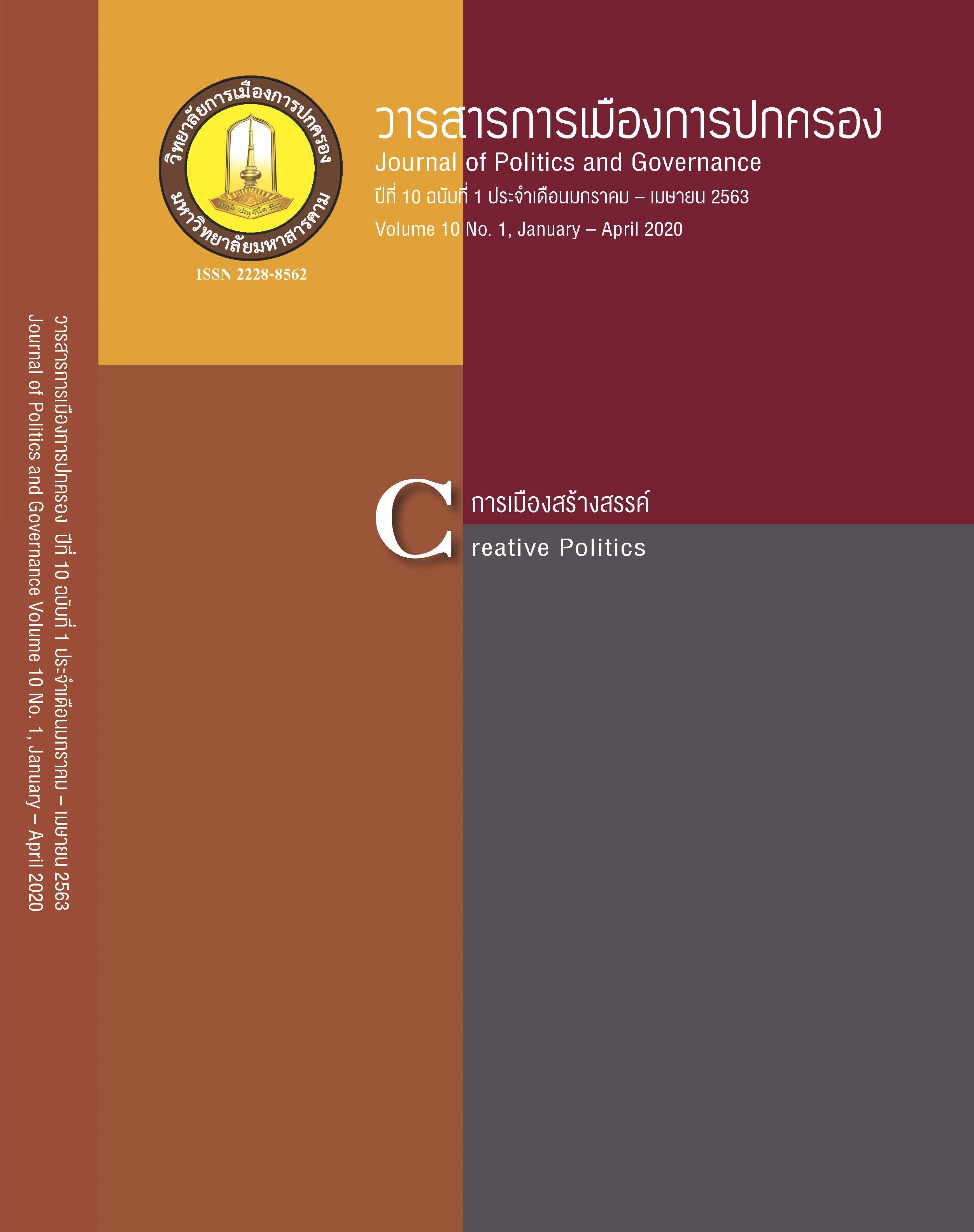Action Research to Promote Learning in Participatory Education Management of Organizations in Community: A case study of Lumpaya Community, Nakhon Pathom
Main Article Content
Abstract
The purpose of this action research was to promote learning in participatory education management of organizations in community. Eighteen committee members of the Lumpaya Community Project on participatory education management of organizations in community were recruited to participate in the study. The action research process included four steps namely 1) Plan: to study the community’s problems and plan for solutions; 2) Action: to take actions according to the plan; 3) Observation: to record information and results of the action plan; and 4) Reflect: to share lessons learned during the course of the problem solving actions. The Lumpaya Community conveyed that to sustainably respond to the need of the community, it was necessary to begin at the grass root level. This translated firstly to capacity building of the human resource. Therefore, a learning program was designed along with activities to improve the quality of life of the people under the "Sustainable development of Lumpaya Community using community paradigm". The reflection from the action research was as follows. Participatory education of organizations in community should rely on the original foundation in designating the community as the core in defining the needs of the community and designing the activities in accordance with those needs. This would create satisfaction and yield the best results in people participation. Analysis of the lessons learned in Lumpaya Community demonstrated that any development projects should employ the steps of action research (Plan-Act-Observe-Reflect). Moreover, they should try to understand the problem, identify the cause and organize a brainstorming session among stakeholders to analyze and apprehend the situation. Then the plan was prepared and actions taken in order to solve the problem or improve the existing circumstance for the benefit of the community and the public.
Article Details
References
กัญญาภัค อังสุพันธ์โกศล กานต์ชนก พรมทา ชัยวัฒน์ พนมวรชัย ดวงกมล โถทอง และธีรังกูล วรบำรุงกุล (2562). อำนาจการบริหารการศึกษาในยุคไทยแลนด์ 4.0. Veridian E-Journal, Silpakorn University, 11(1), (มกราคม – เมษายน), 38-54.
ภักดี รัตนมุขย์. (2561). Thailand 4.0 ตอบโจทย์ประเทศไทย?. กรุงเทพฯ: สำนักพิมพ์ปัญญาชน
พระพรหมคุณาภรณ์ (ป.อ. ปยุตโต). (2553). การพัฒนาที่ยั่งยืน. กรุงเทพฯ: บริษัท สหธรรมิก จำกัด
รัถยา พละศึก เบญจวรรณ ถนอมชยธวัช และ ดลปภัฏ ทรงเลิศ. (2561). การวิจัยเชิงปฏิบัติการแบบมีส่วนร่วม: กระบวนการพัฒนาการสร้างเสริมสุขภาพชุมชนอย่างมีส่วนร่วม. วารสารเครือข่ายวิทยาลัยพยาบาลและการสาธารณสุขภาคใต้, 5(1), 211-223.
วรากรณ์ สามโกเศศ และคณะ. (2553). ข้อเสนอทางเลือกระบบการศึกษาที่เหมาะสมกับสุขภาวะคนไทย. กรุงเทพฯ: โรงพิมพ์ภาพพิมพ์.
พิณสุดา สิริธรังศรี .(2557). การจัดการศึกษาแบบมีส่วนร่วม: กรณีศึกษาโครงการนำร่องการจัดการศึกษาแบบมีส่วนร่วมขององค์กรในชุมชนเพื่อสุขภาวะคนไทย. พิณสุดา สิริธรังศรี (บรรณาธิการ). การศึกษาฐานราก การจัดการศึกษาแบบมีส่วนร่วมขององค์กรในชุมชน: แนวคิด สู่การปฏิบัติ. กรุงเทพฯ: DPU Coolprint มหาวิทยายาลัยธุรกิจบัณฑิต
McNiff, J. (2013). Action research 3nd eds. London: Routledge.Office of the National Economic and Social Development Board (NESDB). (2018). Summary: The twelfth National Economic and Social Development Plan (2017-2021). Bangkok: NESDB.
Stringer, E.T. (2014). Action research. London: SAGE Publications Ltd.
Zuber-Skerritt, O., Wood, L., & Dick, B. (2013). Action Research for Sustainable Development in a Turbulent World: Reflections and Future Perspectives. ALAR Journal, 18(2), pp.184–203.


